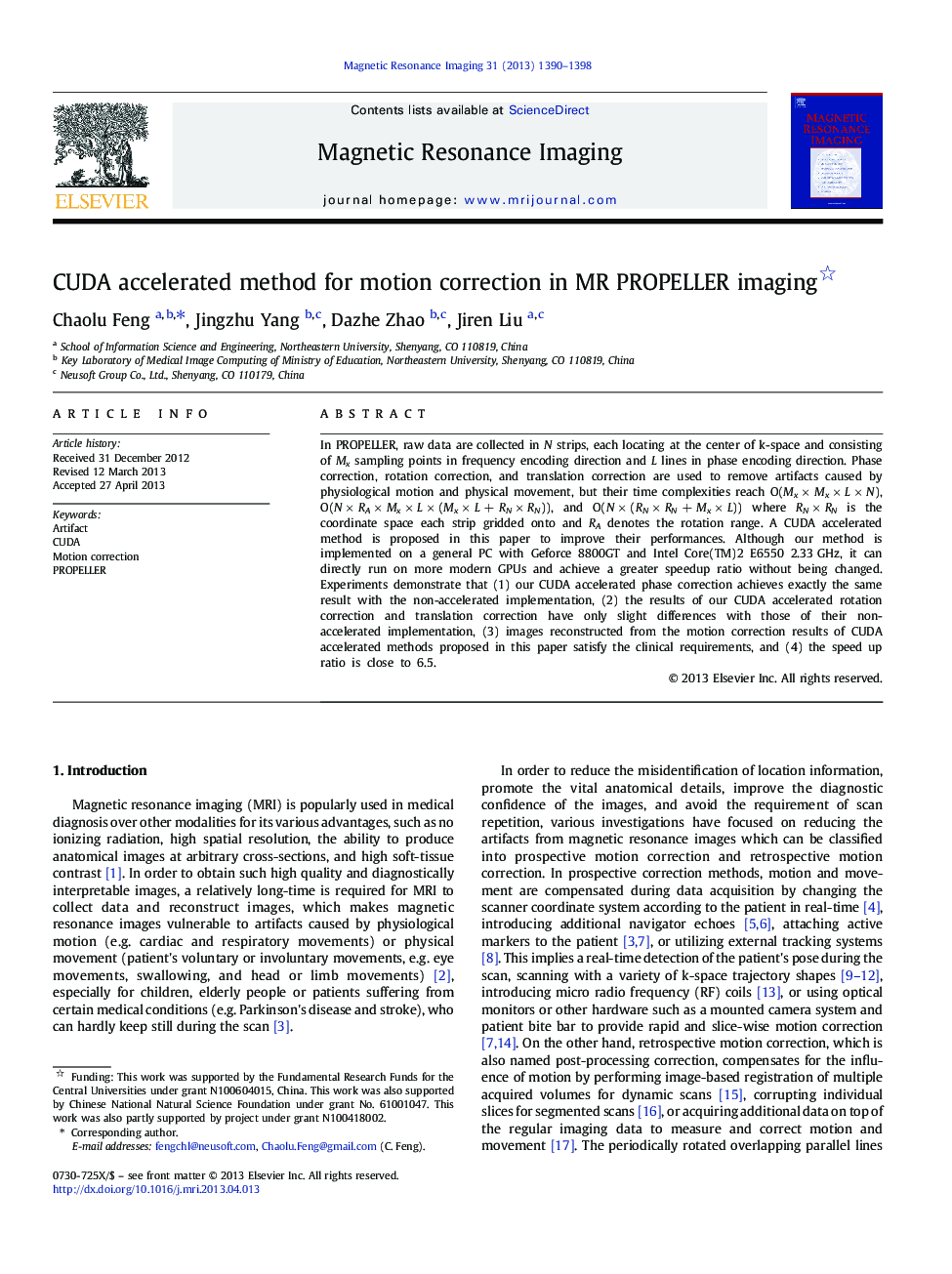| Article ID | Journal | Published Year | Pages | File Type |
|---|---|---|---|---|
| 1806377 | Magnetic Resonance Imaging | 2013 | 9 Pages |
In PROPELLER, raw data are collected in N strips, each locating at the center of k-space and consisting of Mx sampling points in frequency encoding direction and L lines in phase encoding direction. Phase correction, rotation correction, and translation correction are used to remove artifacts caused by physiological motion and physical movement, but their time complexities reach O(Mx × Mx × L × N), O(N × RA × Mx × L × (Mx × L + RN × RN)), and O(N × (RN × RN + Mx × L)) where RN × RN is the coordinate space each strip gridded onto and RA denotes the rotation range. A CUDA accelerated method is proposed in this paper to improve their performances. Although our method is implemented on a general PC with Geforce 8800GT and Intel Core(TM)2 E6550 2.33 GHz, it can directly run on more modern GPUs and achieve a greater speedup ratio without being changed. Experiments demonstrate that (1) our CUDA accelerated phase correction achieves exactly the same result with the non-accelerated implementation, (2) the results of our CUDA accelerated rotation correction and translation correction have only slight differences with those of their non-accelerated implementation, (3) images reconstructed from the motion correction results of CUDA accelerated methods proposed in this paper satisfy the clinical requirements, and (4) the speed up ratio is close to 6.5.
